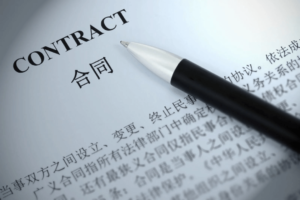Travel blogging has become increasingly popular in recent years, with people from all over the world sharing their adventures and experiences online. These blogs provide a platform for travelers to document their journeys, share tips and recommendations, and inspire others to explore the world. While travel blogging can be done in any language, learning Norwegian can be particularly beneficial for those who want to focus on travel blogging in Norway.
Norway is a country known for its stunning natural landscapes, rich history, and unique culture. By learning Norwegian, travel bloggers can connect more deeply with the local audience and gain a better understanding of the country’s traditions and customs. Writing in Norwegian also allows bloggers to reach a wider audience within Norway, as many locals prefer to consume content in their native language.
Furthermore, writing in Norwegian for a Norwegian audience can help travel bloggers establish themselves as experts on Norway and gain credibility within the local community. By providing valuable information and insights in their blog posts, bloggers can become go-to resources for travelers planning a trip to Norway.
Table of Contents
ToggleKey Takeaways
- Travel blogging in Norwegian can be a great way to share your experiences with others.
- Learning essential vocabulary for travel blogging in Norwegian is important for effective communication.
- Describing your travel experiences in Norwegian can help readers visualize your adventures.
- Engaging travel blog posts in Norwegian should be informative, entertaining, and personal.
- Common phrases for sharing your travel itinerary in Norwegian can help readers plan their own trips.
Essential Vocabulary for Travel Blogging in Norwegian
To effectively communicate with a Norwegian audience, it is important to have a strong foundation of travel-related vocabulary. This includes basic words and phrases such as “reise” (travel), “ferie” (vacation), “fly” (flight), “hotell” (hotel), “restaurant” (restaurant), and “attraksjon” (attraction).
In addition to general travel vocabulary, it is also helpful to learn specific words and phrases related to Norway and Norwegian culture. This can include terms like “fjord” (fjord), “natur” (nature), “nordlys” (northern lights), “bunad” (traditional Norwegian costume), and “smalahove” (traditional Norwegian dish).
To enhance your interactions with locals, it is also useful to learn expressions for basic communication. This can include phrases like “unnskyld, hvor er nærmeste toalett?” (excuse me, where is the nearest restroom?), “kan du anbefale en god restaurant?” (can you recommend a good restaurant?), and “takk for hjelpen!” (thank you for your help!).
How to Describe Your Travel Experiences in Norwegian
When writing about your travel experiences in Norwegian, it is important to engage your readers and transport them to the destinations you are describing. One way to do this is by using storytelling techniques. Instead of simply listing facts and information, try to weave a narrative that captures the essence of your experience.
For example, instead of saying “I visited the famous Geirangerfjord,” you could say “As I stood on the edge of the boat, the mist from the waterfall sprayed my face. The towering cliffs of the Geirangerfjord surrounded me, their sheer magnitude leaving me in awe.”
Descriptive language is also key in engaging your readers. Use adjectives and adverbs to paint a vivid picture of the places you visit. Instead of saying “the view was nice,” try saying “the view was breathtaking, with snow-capped mountains stretching as far as the eye could see.”
Tips for Writing Engaging Travel Blog Posts in Norwegian
To keep your readers interested and coming back for more, it is important to employ writing techniques that captivate their attention. One technique is to use a hook at the beginning of your blog post to grab their attention. This could be a captivating anecdote, an intriguing question, or a surprising fact.
Another important aspect of engaging travel blog posts is structuring them in a way that maximizes impact. Start with an introduction that sets the stage for your story, then move on to the main body where you provide details and insights about your experiences. Finally, end with a conclusion that wraps up your post and leaves readers with a lasting impression.
Humor and personal anecdotes can also help you connect with your audience on a deeper level. Share funny or memorable moments from your travels, and let your personality shine through in your writing. This will make your blog posts more relatable and enjoyable to read.
Common Phrases for Sharing Your Travel Itinerary in Norwegian
When discussing your travel plans and itinerary with locals, it is important to have the necessary vocabulary and phrases at your disposal. This includes words for transportation, accommodations, and activities.
For example, you might need to ask “hvor kan jeg kjøpe en billett?” (where can I buy a ticket?), “har du et ledig rom?” (do you have a vacant room?), or “hva er åpningstidene?” (what are the opening hours?).
When booking accommodations and transportation, it is also helpful to know phrases such as “jeg vil gjerne bestille et rom for to netter” (I would like to book a room for two nights) or “kan jeg få en billett til Bergen?” (can I get a ticket to Bergen?).
Additionally, it is important to be able to communicate your travel plans effectively. This can include phrases like “jeg skal besøke Oslo og Bergen” (I am going to visit Oslo and Bergen) or “vi planlegger å dra på fjelltur i Rondane nasjonalpark” (we are planning to go hiking in Rondane National Park).
Expressing Your Opinions and Impressions in Norwegian Travel Blogging

As a travel blogger, it is important to be able to express your opinions and impressions about the places you visit. This can help your readers make informed decisions about their own travels and provide valuable insights into different destinations.
To express opinions and impressions in Norwegian, it is helpful to learn vocabulary related to expressing likes and dislikes. This can include phrases such as “jeg likte virkelig denne byen” (I really liked this city), “jeg synes maten var fantastisk” (I thought the food was fantastic), or “jeg ble skuffet over attraksjonen” (I was disappointed with the attraction).
When writing travel reviews, it is important to be honest and authentic. Share your true thoughts and feelings about the places you visit, but also provide constructive criticism when necessary. This will help your readers trust your recommendations and opinions.
Using Adjectives and Adverbs to Enhance Your Travel Writing in Norwegian
Adjectives and adverbs are powerful tools for enhancing your travel writing in Norwegian. They allow you to add depth and detail to your descriptions, making your blog posts more engaging and immersive.
To describe places, people, and experiences, it is important to have a wide range of adjectives at your disposal. For example, instead of saying “the city was beautiful,” you could say “the city was breathtakingly beautiful, with its colorful buildings and charming cobblestone streets.”
Adverbs can also be used to add nuance to your writing. Instead of saying “the waterfall was impressive,” you could say “the waterfall cascaded down the cliffside with an awe-inspiring force.”
Describing Local Cuisine and Food Experiences in Norwegian
Food is an integral part of any travel experience, and being able to describe local cuisine and food experiences in Norwegian can greatly enhance your travel blog.
To effectively write about food, it is important to learn vocabulary related to different types of dishes, ingredients, and flavors. This can include words like “fisk” (fish), “kjøtt” (meat), “suppe” (soup), “ost” (cheese), “søtsaker” (sweets), and “krydder” (spices).
When describing food, use sensory language to bring the flavors and textures to life. Instead of saying “the dish was delicious,” try saying “the dish was a symphony of flavors, with the delicate sweetness of the fish complemented by the tangy citrus sauce.”
Sharing Your Travel Photos and Videos in Norwegian
In addition to writing, sharing photos and videos is an important aspect of travel blogging. To effectively communicate about photography and videography in Norwegian, it is helpful to learn vocabulary related to cameras, equipment, and techniques.
For example, you might need to know words like “kamera” (camera), “objektiv” (lens), “blits” (flash), “bilde” (photo), “video” (video), and “redigering” (editing).
When sharing your travel photos and videos on your blog, it is important to provide context and tell a story. Describe the scene, the emotions you felt, and any interesting details about the photo or video. This will help your readers connect with your content on a deeper level.
Improving Your Norwegian Travel Blogging Vocabulary
Learning Norwegian for travel blogging purposes can greatly enhance your ability to connect with a Norwegian audience and provide valuable insights into Norway’s culture, traditions, and destinations. By mastering essential vocabulary and writing techniques, you can create engaging and informative blog posts that resonate with readers.
Continuing to learn and practice Norwegian is key to improving your travel blogging vocabulary. Take advantage of language learning resources such as online courses, language exchange programs, and immersion experiences to further develop your skills.
In conclusion, language learning is an essential tool for travel bloggers who want to connect with local audiences and provide valuable insights into different destinations. By learning Norwegian, you can enhance your travel blogging experience in Norway and establish yourself as an expert in the field. So, don’t hesitate to dive into the world of Norwegian travel blogging and start sharing your adventures with the world.








